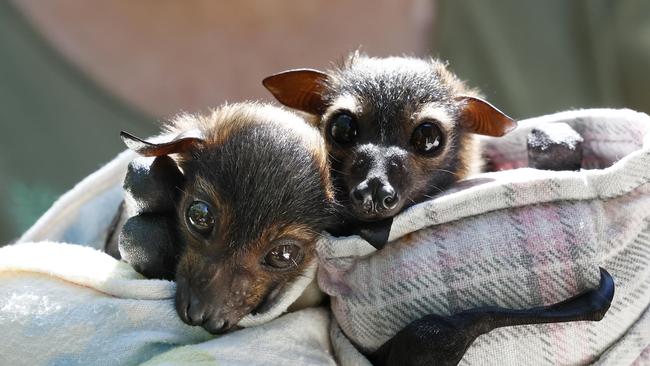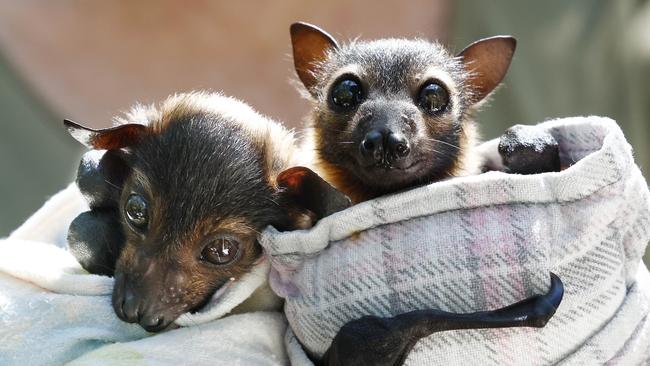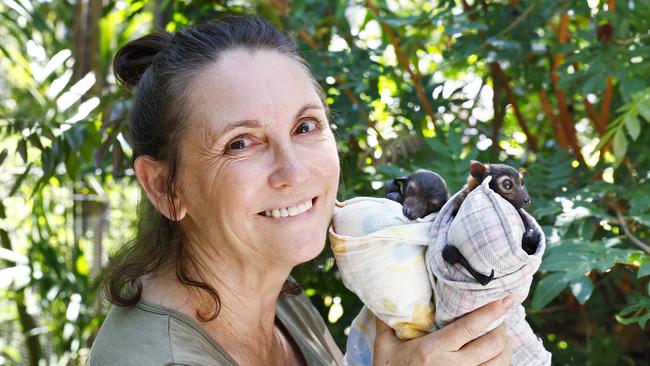Experts issue safety guide after 23 bat attacks in Cairns
Twenty-three people have been bitten or scratched by bats this year in Cairns, as health and wildlife services remind people how they can keep safe this breeding season.

Cairns
Don't miss out on the headlines from Cairns. Followed categories will be added to My News.
Twenty-three people have been bitten or scratched by bats this year in Cairns, as health and wildlife services remind people how they can keep safe this breeding season.
It comes after a woman was bitten by a bat on the way back to her CBD hotel after a night out with friends in September during a rare encounter at night.
Tropical Public Health Services director Dr Richard Gair said people should not fear bats, but should take care around wildlife.
“Not touching bats is essential because their complex immune systems tolerate viruses that can make other animals or people sick. So far this year, there have been 23 people either bitten or scratched by bats, who have required medical treatment,’’ he said.
“The big disease is Australian Bat Lyssavirus which is bat rabies. Anyone bitten or even scratched by a bat needs a series of injections to prevent a potentially fatal illness.”
Dr Gair said any species of bat may be carrying ABLV despite the bat looking normal.
“Bats are very cute up close, so people want to rescue them,’’ he said.

“During breeding season, you are more likely to find fallen pups or sick or injured bats, often stuck on a wire fence. They will bite straight through gloves or a towel, so don’t risk it. Call a trained and vaccinated wildlife carer to help.”
Bats and Trees Society of Cairns vice president Hilary Whitehouse said baby bats had started arriving in wildlife sanctuaries for care.
“Cairns council has a no touch, no risk policy. Essentially you shouldn’t touch a bat until you’ve had the full set of vaccines,” Ms Whitehouse said.
In the case of injured or orphaned bats found in busy or suburban areas, Ms White recommended the general public also follow this rule and urged concerned members of the public to call Cairns Regional Council, or their local wildlife centre.

“Incidents of lyssavirus are very low but not zero. You don’t want an animal to break your skin,” she said.
While bats were more likely to bite and scratch while being handled by the general public, Ms Whitehouse said bats could bite humans without handling, however it was an incredibly rare occurrence.
“It’s very rare that you have a physical bat and human interaction. Bats can get a bit disoriented sometimes. The bat bite incident last month was rare but not impossible,” she said.
“The most important thing is to wash any wound, apply antiseptic and seek medical treatment immediately.”
According to the Bats and Trees Society of Cairns, there are about 90,000 Spectacled Flying Foxes in the region. They are listed as endangered.
Cairns Hospital and Health Service confirmed there had been 177 potential Australian Bat Lyssavirus exposures mainly resulting from bat bites or scratches reported in the Cairns and Hinterland region ibetween January 2018 and October 2023, and 11 cases had been reported for the Cape York and Torres Strait Islands region in the same time period.
More Coverage
Originally published as Experts issue safety guide after 23 bat attacks in Cairns




